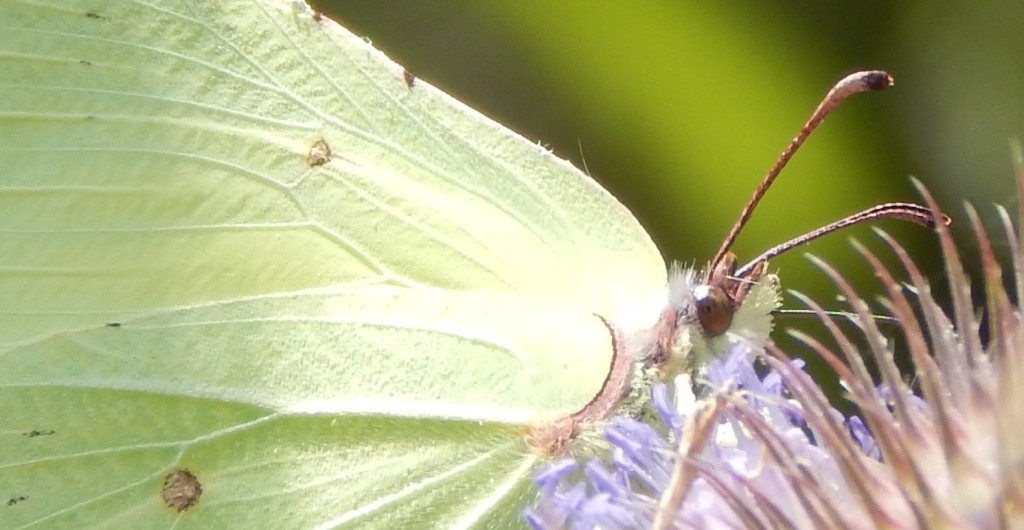
[165] Gonepteryx rhamni, Brimstone
Introduction
Gonepteryx rhamni, the (Common) Brimstone, is a common and widespread pale yellow-green butterfly.
Sometimes we have to call it a Brimstone Butterfly to distinguish it from Opisthograptis luteolata, also called the Brimstone or, more precisely, the Brimstone Moth.
There are fifteen species of Gonepteryx, all called Brimstones but in a UK context we don’t normally have to call Gonepteryx rhamni the Common Brimstone. It’s just a Brimstone.
Taxonomy
Kingdom – Animals
Phylum – Arthropods
Class – Insects
Clade – Endopterygota (Holometabolous)
Order – Lepidoptera (Butterflies and Moths)
Suborder – Rhopalocera (Butterflies and one obscure genus)
Superfamily – Papilionoidea (Butterflies)
Family – Pieridae (White, Yellow or Orange Butterflies)
Subfamily – Coliadinae (Yellow Butterflies)
Tribe – Goniopterygini
Genus – Gonepteryx
Scientific Name – Gonepteryx rhamni
Name
Brimstone, meaning burn-stone, is an old name for sulfur, (previously known as sulphur in the UK) relating to its colour.
Gonepteryx looks like Ancient Greek for angle-wing, perhaps from the shape of the wings, which is not quite the typical butterfly shape. Rhamni relates to the genus Rhamnus – see below.
Description
The male Gonopteryx rhamni is a large butterfly. The female is coloured a very pale green or yellow-green and can appear white when in flight.
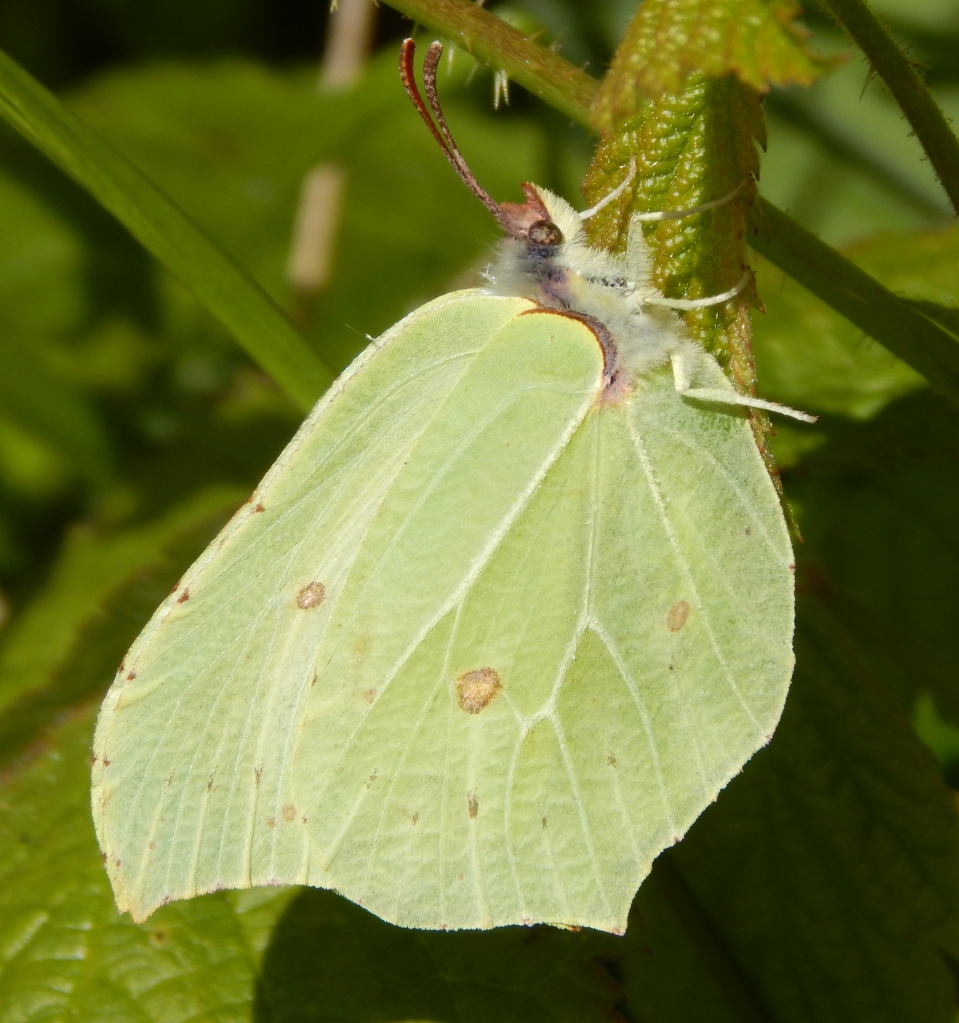
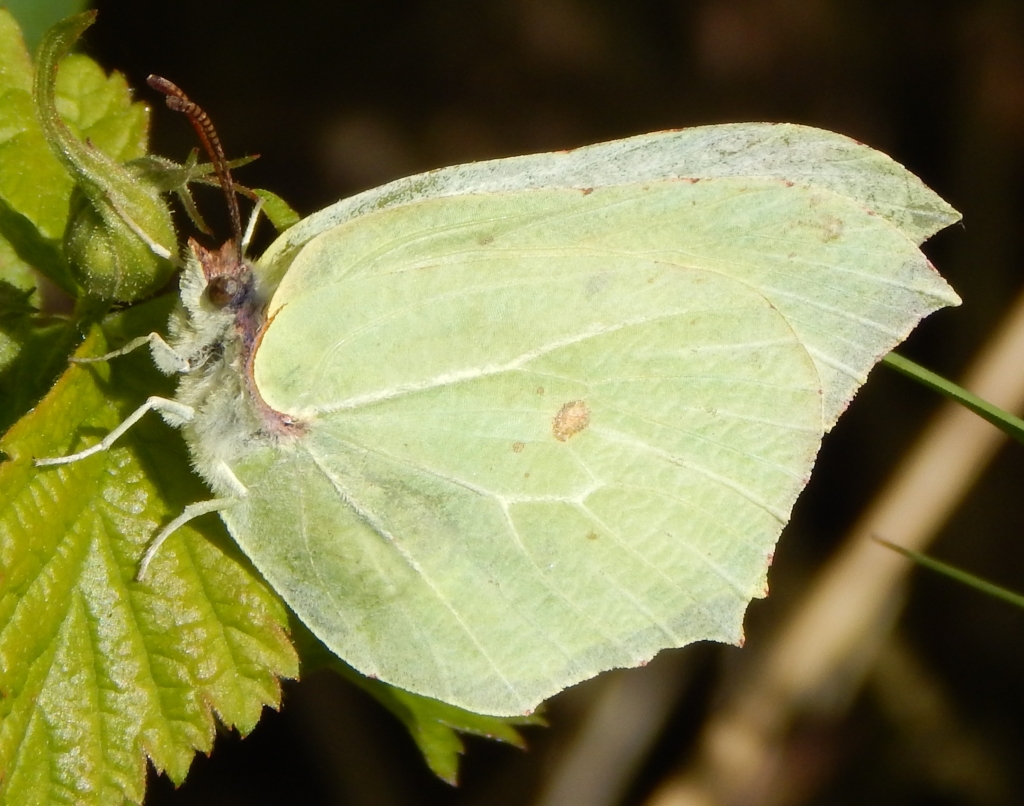

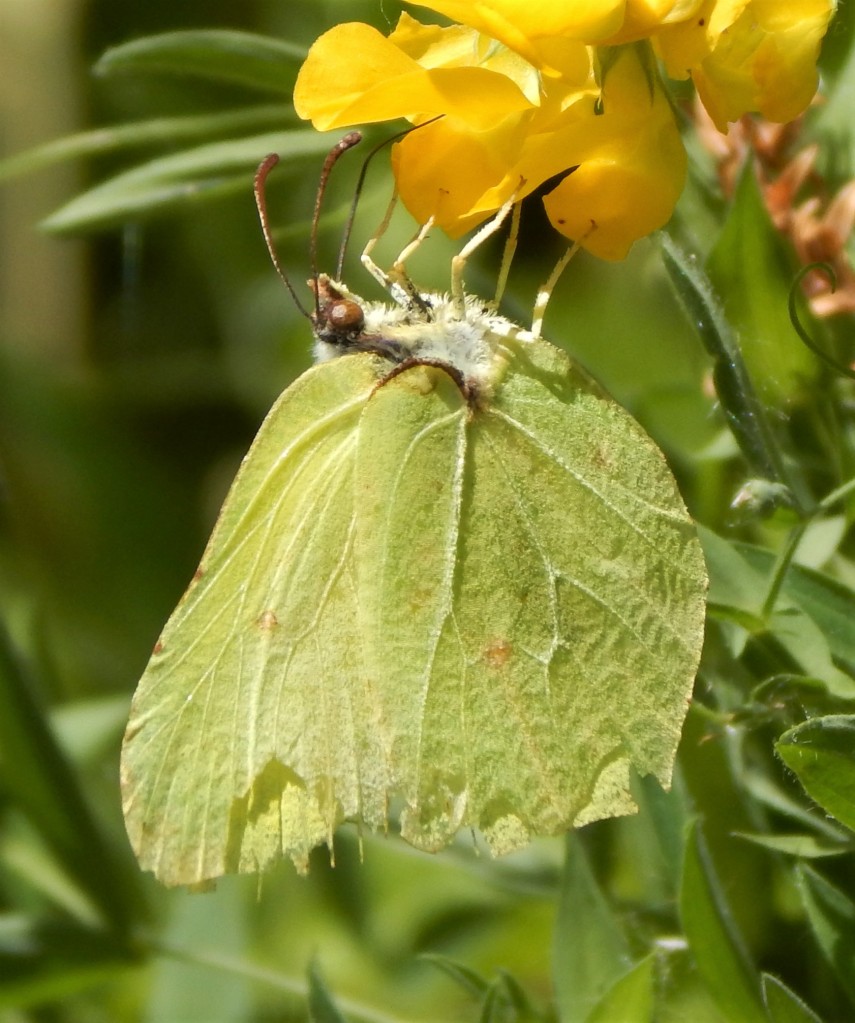
The Male is a brighter yellow colour.
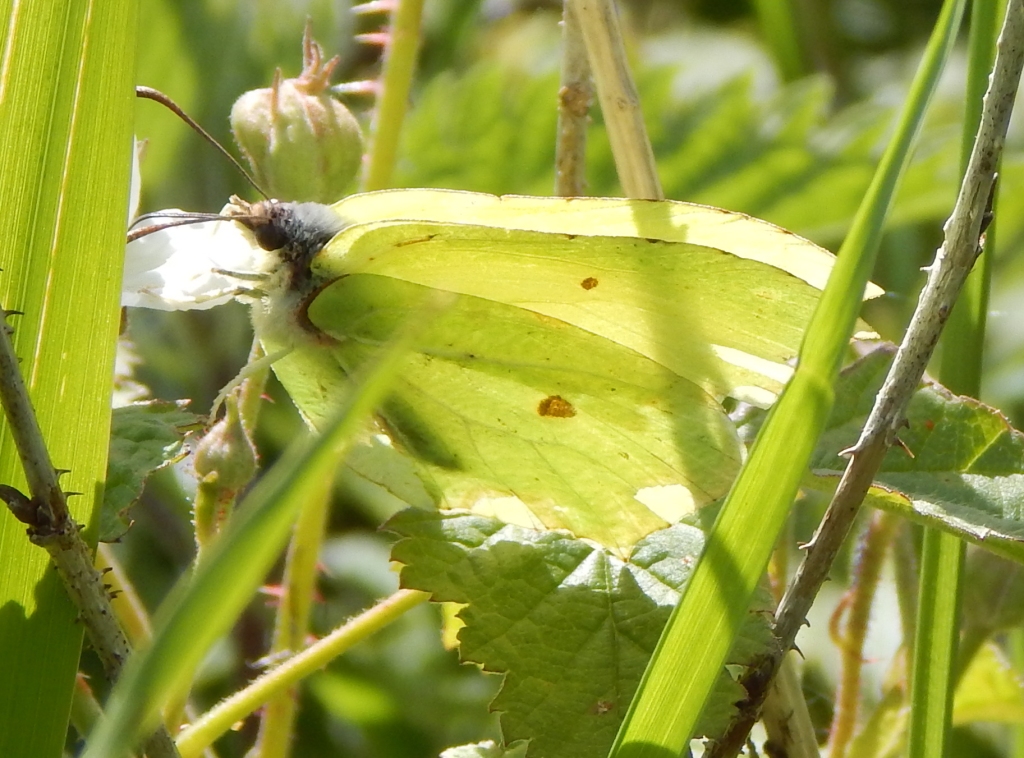
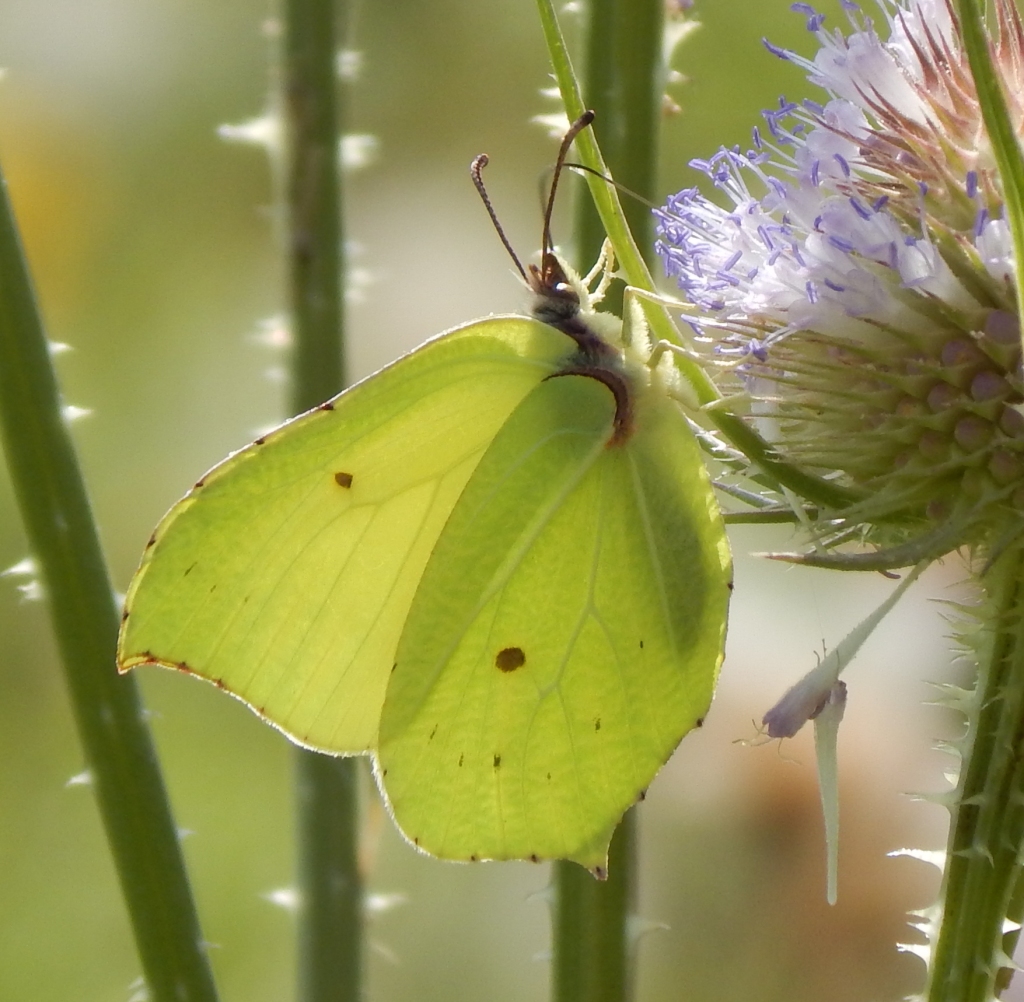
Only one brood per year is produced. The adults overwinter in woodland areas where their colour provides good camouflage against evergreen plants. They return in spring to more wetland habitats to breed.
Habitat
The Brimstone is common throughout Eurasia. In the UK its range, which depends in the availability of its food sources, corresponds to England except the most northern areas and some parts of Wales.
Caterpillars feed only on two species of plants, Rhamnus carthartica, Common Buckthorn, and Rhamnus frangula (also known as Frangula alnus), Alder Buckthorn. Adult butterflies feed on a much wider range of plants.
[Rhamnus is Latinized from the Greek rhamnos. It has second declension Latin endings but is treated as feminine.]
See also
Here is the Brimstone Moth, Opisthograptis luteolata.

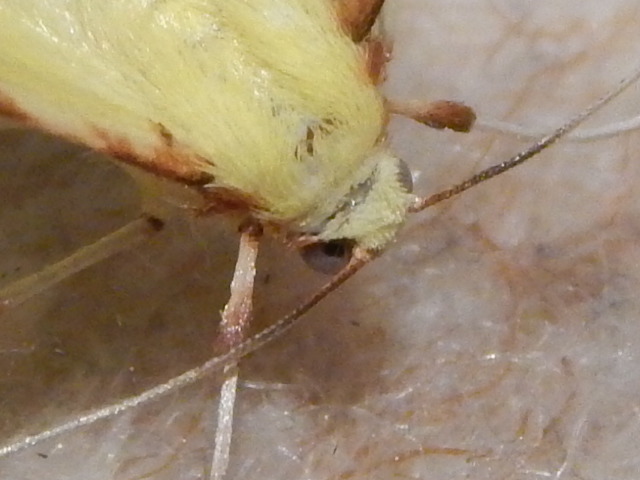
It is quite large for a moth but smaller than the Brimstone Butterfly and perhaps slightly yellower. As for most moths, the only time I have seen them is in my house as overnight visitors.
